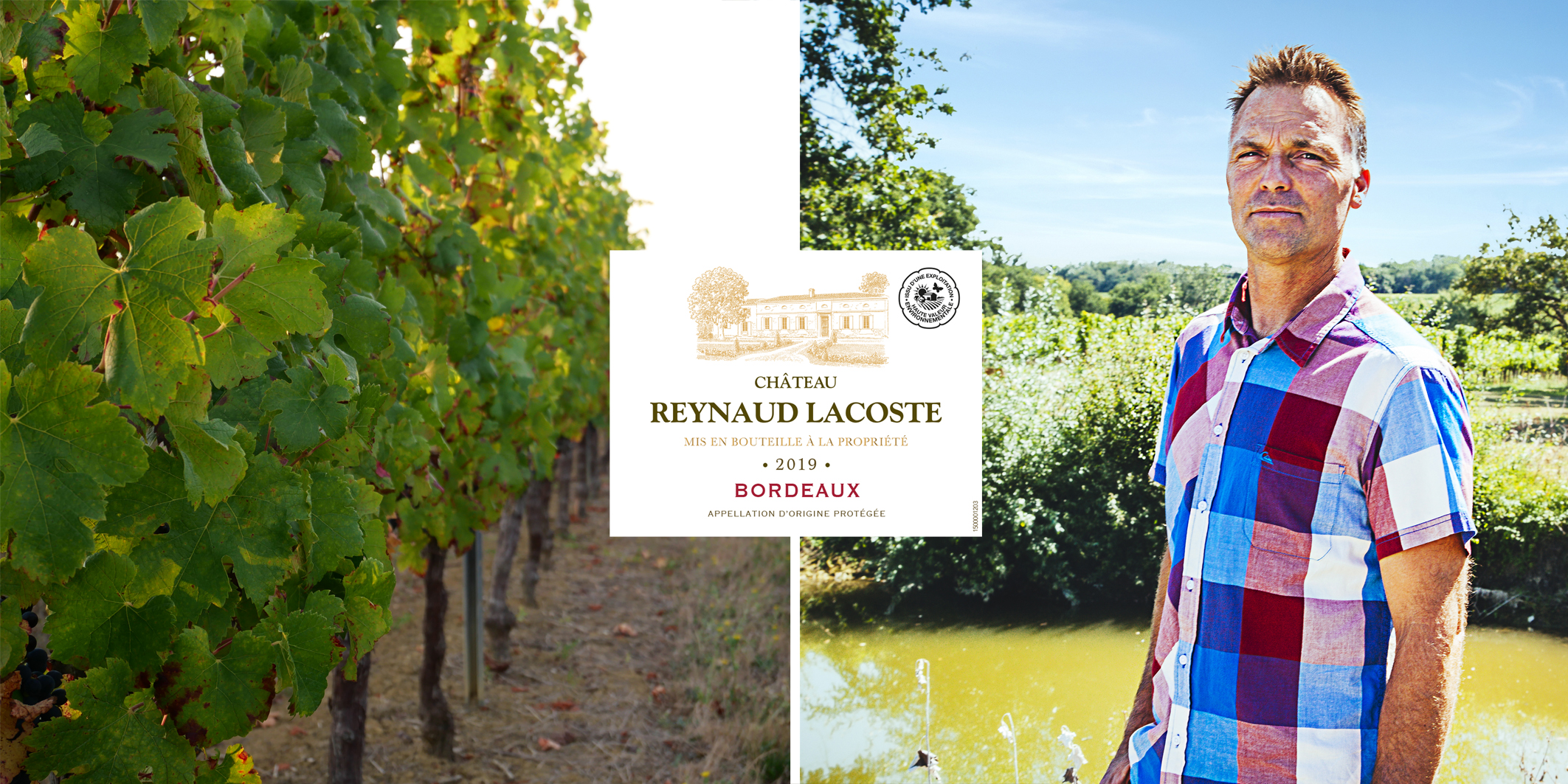
Portrait of
Benoit Lacoste
Owner of ChâteauReynaud Lacoste
Benoît Lacoste kindly receives us, in the middle of harvest, to introduce us to Château Reynaud Lacoste and his commitment to La Coopérative.
Hello Benoît, first of all, where are we today?
We are in the vineyard of Château Reynaud Lacoste, in the commune of Cessac. Located in the Entre-Deux-Mers, this château has 125 hectares of vines. 78% of the vineyard is made up of red grape varieties such as Merlot, Cabernet Sauvignon and Petit Verdot. The remaining 22% are white grape varieties such as Sauvignon, Colombard and Sémillon.
Why “Château Reynaud Lacoste”?
The history of the name is relatively straightforward:
- – Reynaud was the name of the place where my parents lived when they were active.
- – Lacoste is our name, and so Château Reynaud Lacoste.
A family affair? Tell us all about it!
This property has been in the family for 6 generations. I took over the family business in 2010, after having worked my own vineyard, not far from my parents’.
Tell us about your career path.
I have been in the business since 1998. After my BTS (higher technical diploma), I studied for and obtained a master’s degree in management, before settling down and taking over the family business. I increased the area of the vineyard, which I also restructured. I reviewed the mix of grape varieties, the alignment of the rows and the redevelopment of the soils to give more consistency to the plot.
You are clearly committed, but how does this translate into your everyday life?
In 2001, I decided to put in place concrete actions such as the recovery of effluent, a washing platform, control of spraying and recovery of rainwater. In fact, I was the first member of my co-operative cellar to recover my effluent and to obtain HVE3 certification (high environmental value level 3) for my entire vineyard.
To take the process further, I’m also looking for tools that will help me limit the number of times I have to pass between the rows. My soil is made up of loamy boulbène or clay, so it is sensitive to erosion. Limiting passes through the vines will reduce the carbon footprint and soil erosion and encourage permanent grass cover. Plants do the job of a green manure by fixing the carbon in the air.
Let’s talk about High Environmental Value (HVE3). Why did you choose this certification?
All the certification criteria were already met in my vineyard. So I chose to make my commitment official in 2017. I am sympathetic to organic farming, but even more so to the message and the actions in the High Environmental Value specifications.
Why be a member of a cooperative cellar?
The workings of cooperative cellars have always been familiar to me. My parents were already members in their day, and I wanted to concentrate on my profession as a winegrower. In addition, I find that the pooling of the resources offered by the cellars allows us to adopt a more complete and innovative approach. This gives us access to technologies, equipment and methods that allow us to stay ahead. And the sales force available to us, such as the Producta Vignobles team, is a major asset in promoting our products.
So I didn’t hesitate for a second when I was given the opportunity to become an ambassador for the cuvée of the same name, La Coopérative, in 2019.



